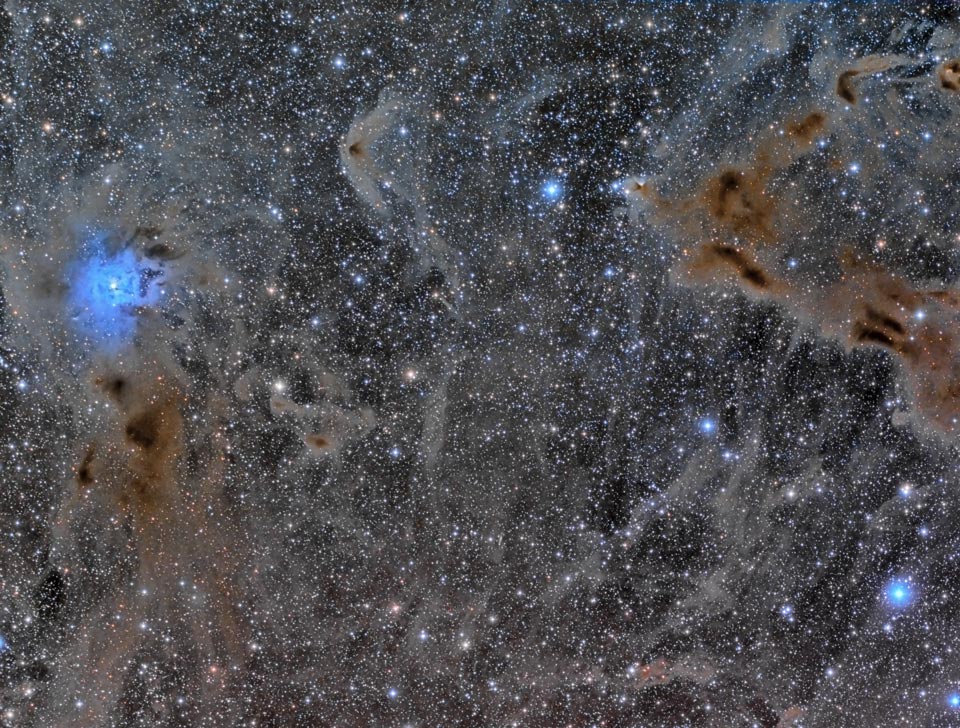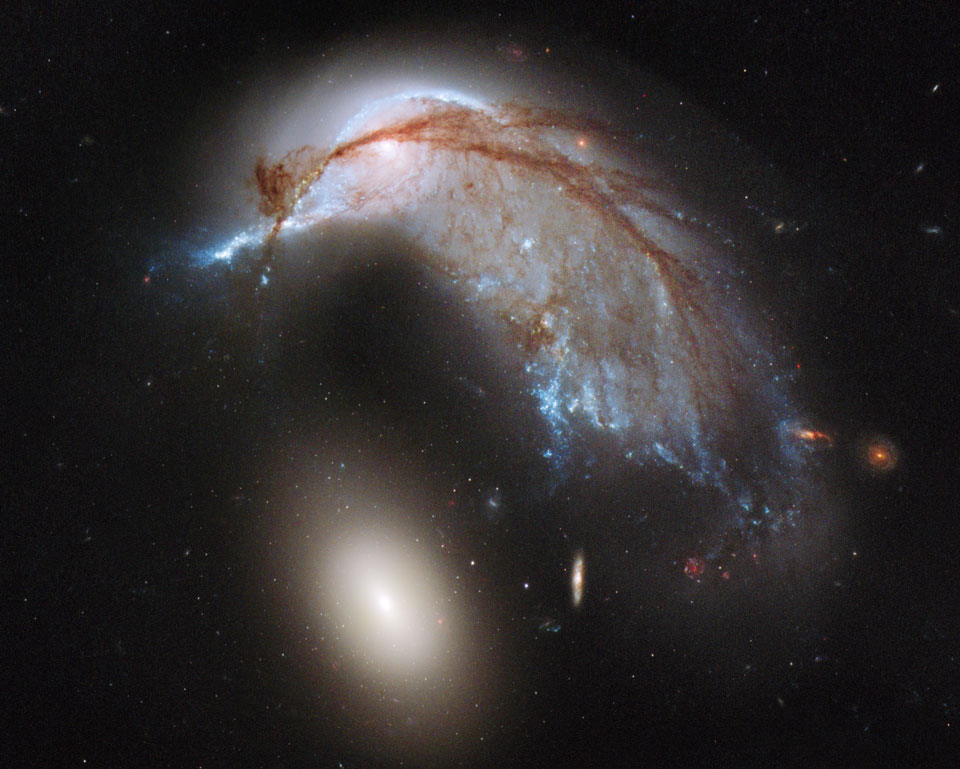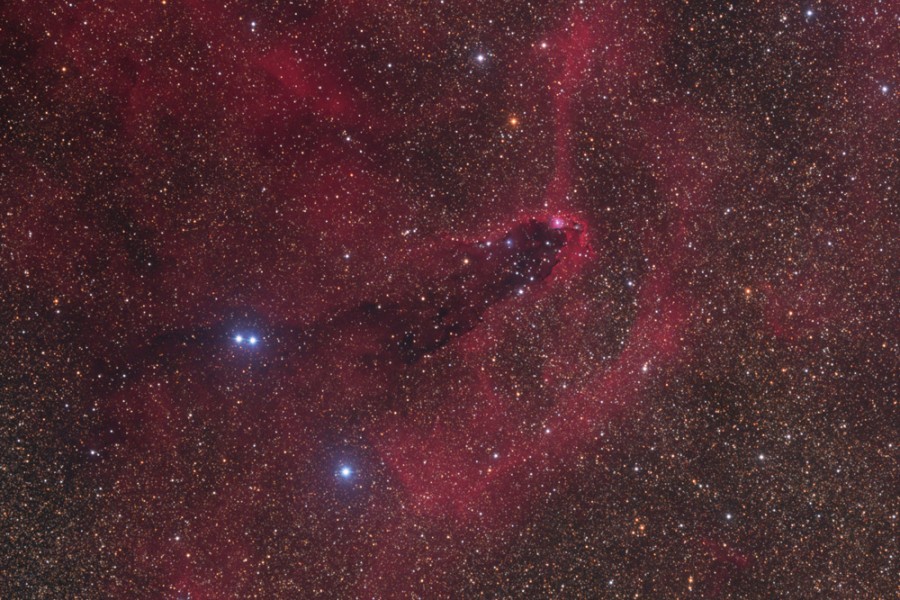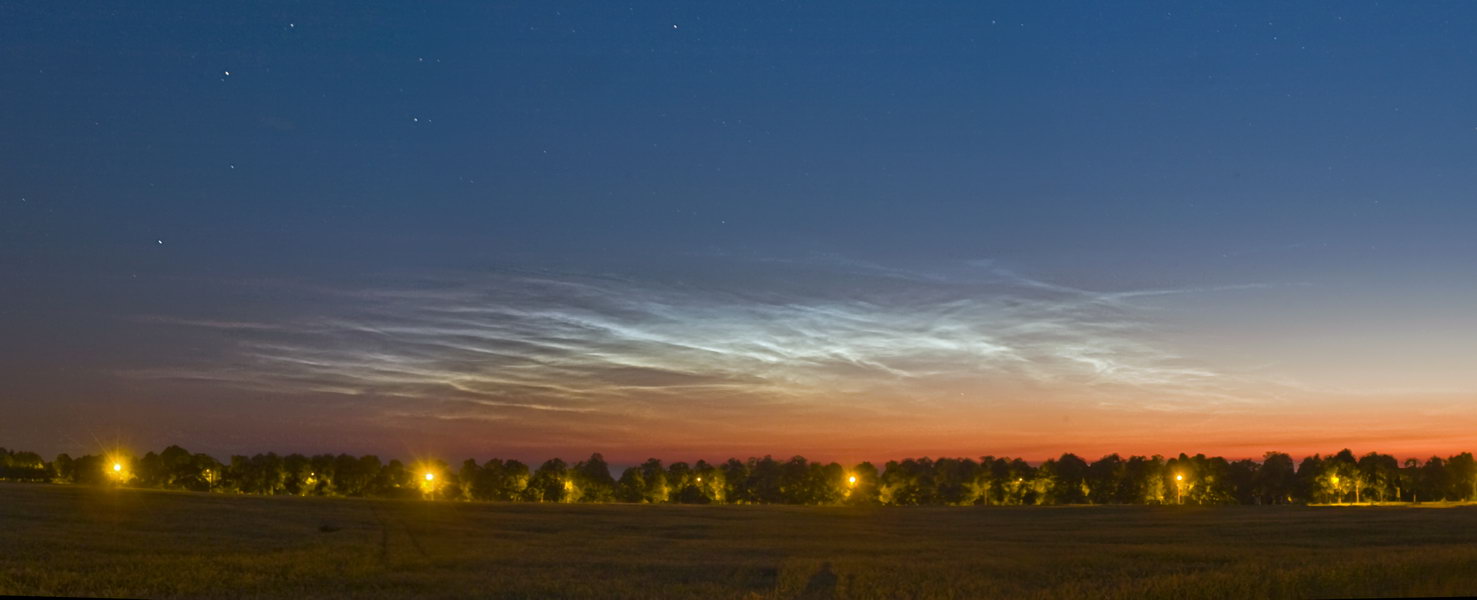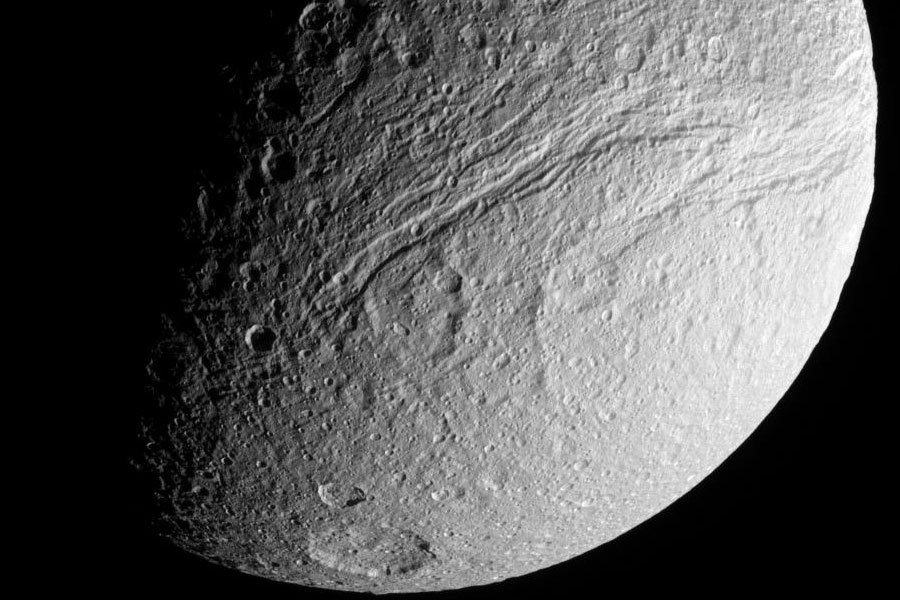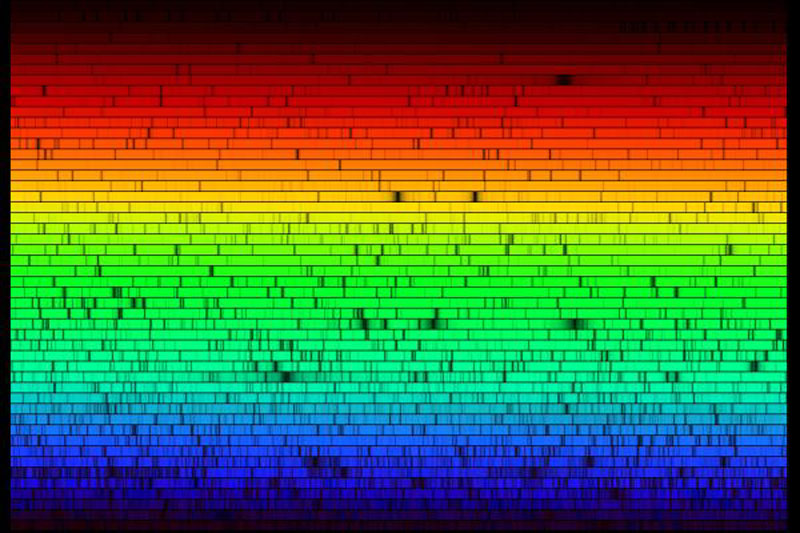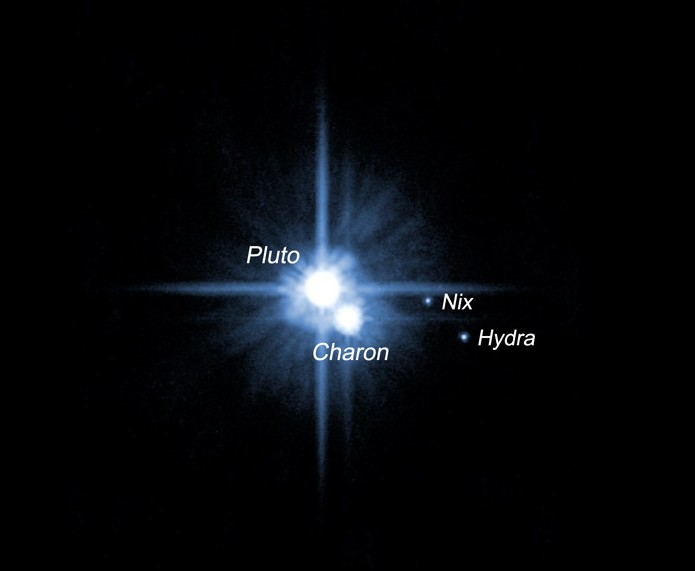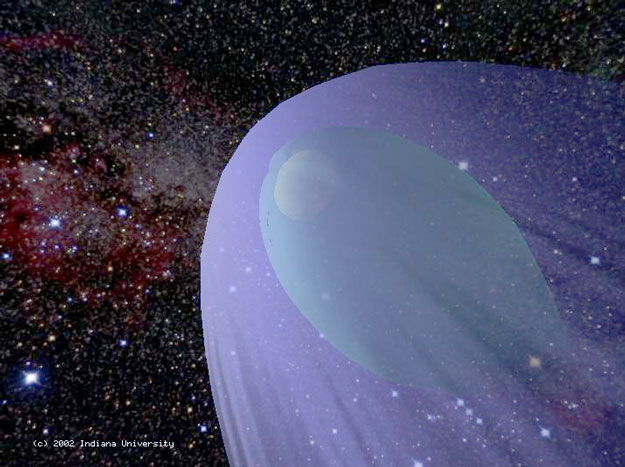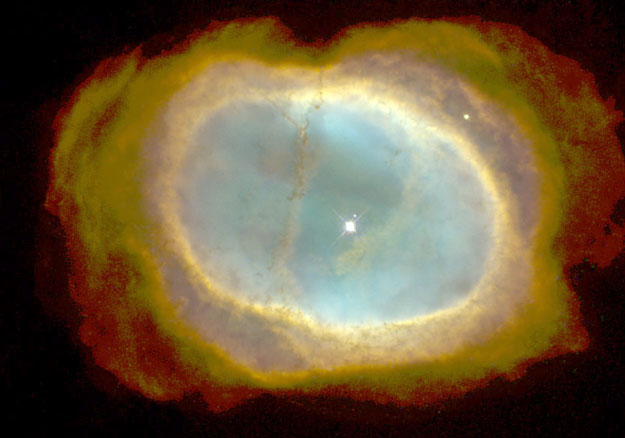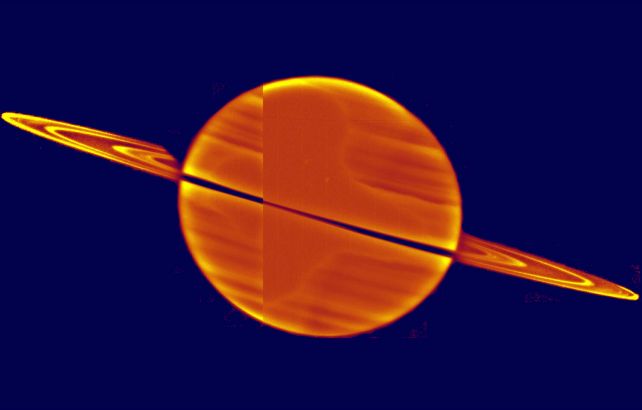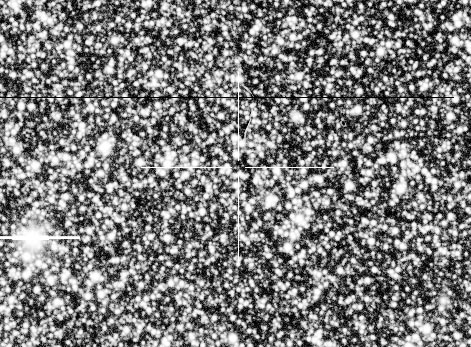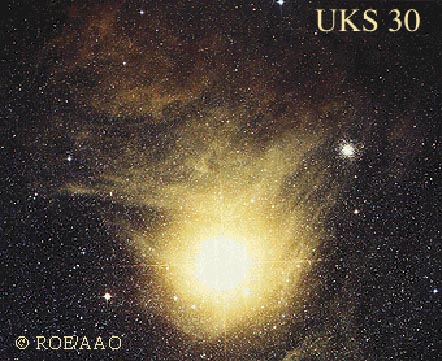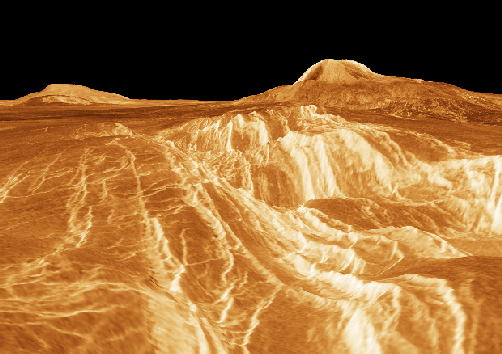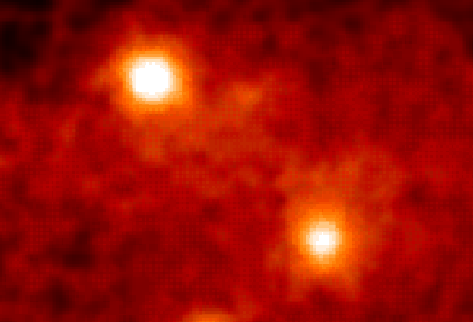| << Previous | Index | Next >> |
2015 What are those bright objects hovering over the horizon? Planets -- and the Moon. First out, the horizon featured is a shoreline of the Atlantic Ocean that occurs at the Galicia National Park in northern Spain. Next furthest out, on the left, is the Moon. Easily the brightest object on the night sky, the Moon here was in only a crescent phase. The next furthest out, on the right, is the planet Venus, while planet Jupiter is seen at the top of the triangle. The long exposure from our rapidly rotating Earth made all of celestial objects -- including the far distant stars -- appear as slight arcs. The featured image was taken last Sunday night. Although the Moon's orbit has now taken it away from this part of the sky, the planets Venus and Jupiter can be seen superposed just after sunset until mid-August. The closest apparent separation of Venus and Jupiter will occur in one week, when the two planets will appear separated by less than the angular diameter of the Moon.
2014 What flowers in this field of dark star dust? The Iris Nebula. The striking blue color of the Iris Nebula is created by light from the bright star SAO 19158 reflecting off of a dense patch of normally dark dust. Not only is the star itself mostly blue, but blue light from the star is preferentially reflected by the dust -- the same affect that makes Earth's sky blue. The brown tint of the pervasive dust comes partly from photoluminescence -- dust converting ultraviolet radiation to red light. Cataloged as NGC 7023, the Iris Nebula is studied frequently because of the unusual prevalence there of Polycyclic Aromatic Hydrocarbons (PAHs), complex molecules that are also released on Earth during the incomplete combustion of wood fires. The bright blue portion of the Iris Nebula spans about six light years. The Iris Nebula, pictured above, lies about 1300 light years distant and can be found with a small telescope toward the constellation of Cepheus.
2013 What's happening to this spiral galaxy? Just a few hundred million years ago, NGC 2936, the upper of the two large galaxies shown, was likely a normal spiral galaxy -- spinning, creating stars -- and minding its own business. But then it got too close to the massive elliptical galaxy NGC 2937 below and took a dive. Dubbed the Porpoise Galaxy for its iconic shape, NGC 2936 is not only being deflected but also being distorted by the close gravitational interaction. A burst of young blue stars forms the nose of the porpoise toward the left of the upper galaxy, while the center of the spiral appears as an eye. Alternatively, the galaxy pair, together known as Arp 142, look to some like a penguin protecting an egg. Either way, intricate dark dust lanes and bright blue star streams trail the troubled galaxy to the lower right. The above recently-released image showing Arp 142 in unprecedented detail was taken by the Hubble Space Telescope last year. Arp 142 lies about 300 million light years away toward the constellation, coincidently, of the Water Snake (Hydra). In a billion years or so the two galaxies will likely merge into one larger galaxy.
2012 In December of 1972, Apollo 17 astronauts Eugene Cernan and Harrison Schmitt spent about 75 hours on the Moon in the Taurus-Littrow valley, while colleague Ronald Evans orbited overhead. This sharp image was taken by Cernan as he and Schmitt roamed the valley floor. The image shows Schmitt on the left with the lunar rover at the edge of Shorty Crater, near the spot where geologist Schmitt discovered orange lunar soil. The Apollo 17 crew returned with 110 kilograms of rock and soil samples, more than was returned from any of the other lunar landing sites. Now forty years later, Cernan and Schmitt are still the last to walk on the Moon.
2011
[imghover6=http://apod.nasa.gov/apod/image/1106/20 ... per900.jpg]http://apod.nasa.gov/apod/image/1106/20 ... abeled.jpg[/imghover6]Image Credit & Copyright: Rogelio Bernal Andreo
2010 In silhouette against a crowded star field toward the constellation Scorpius, this dusty cosmic cloud evokes for some the image of an ominous dark tower. In fact, clumps of dust and molecular gas collapsing to form stars may well lurk within the dark nebula, a structure that spans almost 40 light-years across the gorgeous telescopic view. Known as a cometary globule, the swept-back cloud, extending from the lower left to the head (top of the tower) right and above center, is shaped by intense ultraviolet radiation from the OB association of very hot stars in NGC 6231, off the right edge of the scene. That energetic ultraviolet light also powers the globule's bordering reddish glow of hydrogen gas. Hot stars embedded in the dust can be seen as bluish reflection nebulae. This dark tower, NGC 6231, and associated nebulae are about 5,000 light-years away.
2009 Sometimes it's night on the ground but day in the air. As the Earth rotates to eclipse the Sun, sunset rises up from the ground. Therefore, at sunset on the ground, sunlight still shines on clouds above. Under usual circumstances, a pretty sunset might be visible, but unusual noctilucent clouds float so high up they can be seen well after dark. Pictured above last week, a network of noctilucent clouds cast an eerie white glow after dusk, beyond a local field near Potsdam, Germany. Although noctilucent clouds are thought to be composed of small ice-coated particles, much remains unknown about them. Satellites launched to help study these clouds include Sweden's Odin and NASA's AIM. Recent evidence indicates that at least some noctilucent clouds result from freezing water exhaust from Space Shuttles.
2008 What created the Great Rift on Saturn's moon Tethys? No one is sure. More formally named Ithaca Chasma, the long canyon running across the right of the above image extends about 2,000 kilometers long and spreads as much as 100 kilometers wide. The above image was captured by the Saturn-orbiting robotic Cassini spacecraft as it zoomed by the icy moon last month. Hypotheses for the formation of Ithaca Chasma include cracking of Tethy's outer crust as the moon cooled long ago, and that somehow the rift is related to the huge Great Basin impact crater named Odysseus, visible elsewhere on the unusual moon. Cassini has now been orbiting Saturn for about four years and is scheduled to continue to probe and photograph Saturn for at least two more years.
2007 It is still not known why the Sun's light is missing some colors. Shown above are all the visible colors of the Sun, produced by passing the Sun's light through a prism-like device. The above spectrum was created at the McMath-Pierce Solar Observatory and shows, first off, that although our yellow-appearing Sun emits light of nearly every color, it does indeed appear brightest in yellow-green light. The dark patches in the above spectrum arise from gas at or above the Sun's surface absorbing sunlight emitted below. Since different types of gas absorb different colors of light, it is possible to determine what gasses compose the Sun. Helium, for example, was first discovered in 1870 on a solar spectrum and only later found here on Earth. Today, the majority of spectral absorption lines have been identified - but not all.
2006
2005
[imghover6=http://apod.nasa.gov/apod/image/0506/We ... 1905_u.jpg]http://apod.nasa.gov/apod/image/0506/We ... 1905_l.jpg[/imghover6]Credit & Copyright: Jimmy Westlake (Colorado Mountain College)
2004 Peering deep inside Centaurus A, the closest active galaxy to Earth, the Spitzer Space Telescope's penetrating infrared cameras recorded this startling vista. About 1,000 light-years across, the twisted cosmic dust cloud apparently shaped like a parallelogram is likely the result of a smaller spiral galaxy falling into the giant Centaurus A. The parallelogram lies along the active galaxy's central band of dust and stars visible in more familiar optical images. Astronomers believe that the striking geometric shape represents an approximately edge-on view of the infalling spiral galaxy's disk in the process of being twisted and warped by the interaction. Ultimately, debris from the ill-fated spiral galaxy should provide fuel for the supermassive black hole lurking at the center of Centaurus A.
2003 How smooth is the Sun? The new Swedish 1-m Solar Telescope, deployed in the Canary Islands only last year, allows imaging of objects less than 100-km across on the Sun's surface. When pointed toward the Sun's edge, surface objects now begin to block each other, indicating true three-dimensional information. Close inspection of the image reveals much vertical information, including spectacular light-bridges rising nearly 500-km above the floor of sunspots near the top of the image. Also visible in the above false-color image are hundreds of bubbling granules, each about 1000-km across, and small bright regions known as faculas.
2002 Where does the Sun's influence end? Nobody is sure. Out past the orbits of Neptune and Pluto extends a region named the heliosphere where the Sun's magnetic field and particles from the Solar Wind continue to dominate. The surface where the Solar Wind drops below sound speed is called the termination shock and is depicted as the inner oval in the above computer-generated illustration. It is thought that this surface occurs as close as 75-90 AU -- so close that a Pioneer or Voyager spacecraft may soon glide through it as they exit the Solar System at about 3 AU/year. The actual contact sheet between the Sun's ions and the Galaxy's ions is called the heliopause and is thought to occur at about 110 AU. It is depicted above as the middle surface. The Sun's heliopause moves through the local interstellar medium much as a boat moves on water, pushing a bow shock out in front, thought to occur near 230 AU.
2001 It's the dim star, not the bright one, near the center of NGC 3132 that created this odd but beautiful planetary nebula. Nicknamed the Eight-Burst Nebula and the Southern Ring Nebula, the glowing gas originated in the outer layers of a star like our Sun. In this representative color picture, the hot blue pool of light seen surrounding this binary system is energized by the hot surface of the faint star. Although photographed to explore unusual symmetries, it's the asymmetries that help make this planetary nebula so intriguing. Neither the unusual shape of the surrounding cooler shell nor the structure and placements of the cool filamentary dust lanes running across NGC 3132 are well understood.
2000 Normally, earth-bound astronomers view Saturn's spectacular ring system fully illuminated by reflected sunlight. However, this intriguing picture was made to take advantage of an unusual orientation, with the Sun actually illuminating the rings from below. The three bright ring features are visible because the rings themselves are not solid. Composed of many separate chunks of rocky, icy material, the rings allow the scattered sunlight to pass through them -- offering a dramatic demonstration that they are not continuous, uninterrupted bands of material. The picture is a false-color composite based on Hubble Space Telescope images recorded in November of 1995.
1999 Many spiral galaxies have bars across their centers. Even our own Milky Way Galaxy is thought to have a bar, but perhaps not so prominent as the one in NGC 1365, shown above. The persistence and motion of the bar imply relatively massive spiral arms. The placements of bright young blue stars and dark dust lanes also indicate a strong rotating density wave of star formation. NGC 1365 is a member of the Fornax Cluster of Galaxies. Because NGC 1365 is relatively nearby, simultaneous measurements of its speed and distance are possible, which help astronomers estimate how fast our universe is expanding.
1998 If a star in this photograph twinkled slightly, would anyone notice? Would anyone care? Astronomers with the MACHO Collaboration noticed one such twinkle just last week, and many members of the astronomical community now care. The specific type of sparkling of the SMC star in the above cross-hairs clearly indicated a multiple-star microlensing event was in progress. Microlensing is a rare phenomena where gravity itself deflects light so prominently that background sources might appear to have many images and appear many times their normal brightness. Study of the precise details of the latter part of this microlensing event might reveal the mass and distance to the lenses. Were these lenses in the outer reaches of our Galactic halo, this would add evidence to some controversial indications that a good fraction of the normally unseen matter in our Galaxy is composed of lenses only slightly less massive than our Sun.
1997 Antares is a huge star. In a class called red supergiant, Antares is about 700 times the size of our own Sun, 15 times more massive, and 10,000 times brighter. Antares is the brightest star in the constellation of Scorpius and one of the brighter stars in all the night sky. Antares is surrounded by a nebula of gas which it has itself expelled. Radiation from Antares' blue stellar companion helps cause the nebular gas to glow, as photographed above. Antares is located about 500 light years away.
1996 Color information from the Soviet Venera landers and radar data from the Magellan spacecraft were used to construct this striking perspective view of the Venusian landscape. (In this computer generated image, the vertical scale has been exagerated.) In the foreground is the edge of a rift valley created by faulting in the crust of Venus. The valley runs all the way to the base of Gula Mons, a 2 mile high volcano seen here on the right, some 450 miles in the distance. On the left is another volcano, Sif Mons. Using radar to pierce the dense clouds continuously shrouding the Face of Venus, Magellan was able to explore over 98% of the Venusian surface, revealing a a diverse and tantalizing topography.
1995 What if you could "see" in gamma-rays? If you could, these two spinning neutron stars or pulsars would be among the brightest objects in the sky. This computer processed image shows the Crab Nebula pulsar (below and right of center) and the Geminga pulsar (above and left of center) in the "light" of gamma-rays. Gamma-ray photons are more than 10,000 times more energetic than visible light photons and are blocked from the Earths's surface by the atmosphere. This image was produced by the high energy gamma-ray telescope "EGRET" on board NASA's orbiting Compton Observatory satellite.
| << Previous | Index | Next >> |

